Tiptop Audio MODEL 296t Handleiding
Tiptop Audio
Keyboard
MODEL 296t
Bekijk gratis de handleiding van Tiptop Audio MODEL 296t (5 pagina’s), behorend tot de categorie Keyboard. Deze gids werd als nuttig beoordeeld door 57 mensen en kreeg gemiddeld 5.0 sterren uit 29 reviews. Heb je een vraag over Tiptop Audio MODEL 296t of wil je andere gebruikers van dit product iets vragen? Stel een vraag
Pagina 1/5

PROGRAMMABLE SPECTRAL PROCESSOR - MODEL 296t
Eurorack 200 series
Specifications:
Size: 52 HP - Depth: 52 mm
Power: +12V 360mA / -12V 350mA
Envelope Follower Outputs
tracks the amplitude of each bandpass filter and converts it into
CV to be sent to modulate any other parameter in the system.
Env. Decay Time
adjusts the decay shape of
the Envelope Follower’s CV.
Comb Filter Outputs
are unattenuated audio outs
of Even and Odd collection
of bandpass filters.
Individual Audio Outputs
for each bandpass filter to be sent for further processing and/or
to be used as a modulation source (i.e. FM).
Attenuated Outputs
these are aected by the individual bandpass slider
positions and are mixed at the All output or split into Even
and Odd outputs. Great for stereo eect.
Programmed Outputs
are not aected by the slider positions, rather they are aected by the Program Control,
Programmed Spectrum Transfer Local Program CV Inputs and .
Just like the Attenuated Outputs its audio outputs are Even, Odd and Mixed.
Signal Inputs use both even
and odd inputs especially in
tandem with the Programmed
Spectrum Transfer section for
vocoding eects.
Programmed Spectrum Transfer
section applies the spectrum
from the even bandpass filters to
the odd filters (left switch) or odd
to even (right switch).
Pre-Emphasis pots add gain to
even or odd highs respectively.
Program Control
the left potentiometer manually sweeps through the bands or can respond frequency
to CV via its frequency jack and attenuverter potentiometer. The has a CV jack width
with an attenuator potentiometer. With the pot fully counter-clockwise the width
responses as a VCA. Osetting this pot determines the width of the bandpass filters
engaged.

PROGRAMMABLE SPECTRAL PROCESSOR - MODEL 296t
Eurorack 200 series
Please note:
On the back of your 296t are eight vertically mounted filter band cards. The cards are flexible and can move few millimeters left and
right, this is normal and no need to be alarmed, the cards are firmly secured to the connector and require strong force to be pulled
out.
The 296t consumes 360mA from the +12V rail and 350mA from the -12V rail. It is important to have a strong regulated power supply
like Mantis to power it. Make sure to calculate the power consumption of all the other modules in your case to make sure all the
modules combined do not overload your power rails and the maximum current the external power adapter that your case can
supply.
User Instructions:
Transcribed from Buchla Synthesizer User Guide November 16, 1982 written by Daniel J. Schedit and modified for the 296t.
The PROGRAMMABLE SPECTRAL PROCESSOR is an elaborate set of filters with a number of dierent outputs and special
functions. Perhaps its most obvious function is that of a sixteen band "graphic equalizer". The sixteen bands are labeled in hex
numerals (0 through F) at the top and bottom of the module and the centre frequency of each band is indicated above each slider
attenuator.
ATTENUATOR OUTPUTS
The signal input jacks, in the bottom right, oer the choice of putting a signal into the eight even numbered bands, all sixteen bands,
or the eight odd bands. Note that these are just the even or odd numbered bands on the equalizer and have no correspondence to
even or odd harmonics.) The ATTENUATOR OUTPUTS on the right of the module also oer "even", "odd", or "all" signal outputs. With
a signal patched into the "ALL" signal input and taken out through the "ALL" attenuator output the module functions just as a sixteen
band graphic equalizer. Note on the scale for the attenuators that -3dB is the top range of the sliders and that a slider at the very top
is actually giving -3dB to frequencies in that band. An attenuator at the very bottom will completely cut o any signal in that
frequency band.
The signal output jacks directly above each attenuator oer the signal present within that frequency band at 0dB. These outputs are
not aected by the attenuator's positions. The COMB FILTER, outputs oer the signals from either all the “even” or all the "odd"
bands and are also unaected by the attenuators and are set at 0dB.
CONTROL VOLTAGE OUTPUTS
The control voltage outputs labeled ENVELOPE OUTPUTS are envelope follower outputs for each frequency band. In other words,
the voltage from these outputs represents the amplitude of the signal present within each band. The switch in the upper right selects
"long" “combo” or "short" envelope decay times. These outputs are not aected by the positions of the attenuators.
PROGRAMMED OUTPUTS
The SPECTRAL PROCESSOR can be voltage controlled in a variety of ways. The results of any control voltage manipulation are
presented to the PROGRAMMED outputs. It is possible to "sweep" through the various frequency bands (much like a bandpass filter
can "sweep" the frequency spectrum) using the left knob on the PROGRAM CONTROL section. This knob can be voltage controlled
through the control voltage input labeled FREQUENCY. The knob beside the input is an inverting attenuator the same as others on
the synthesizer. On the right is a WIDTH control knob which determines the widths of the sixteen frequency bands. The labeling
above each attenuator indicates the approximate center frequency of each band. Notice that as the bandwidth gets very narrow
"gaps" appear between each band and then the bands disappear completely and no signal is passed. At the MAX setting each band
is so wide as to encompass the entire frequency spectrum and the FREQ control will have no eect. This knob can be voltage
controlled but it has no attenuator on the control voltage. The LOCAL PROGRAM INPUTS allow individual voltage control of the
signal level in each frequency band. With no control voltage the signal for that band is cut o. As a control voltage increases the
signal is gradually unattenuated.

PROGRAMMABLE SPECTRAL PROCESSOR - MODEL 296t
Eurorack 200 series
SPECTRAL BIAS
The pair of knobs and switches labeled PROGRAMMED SPECTRUM TRANSFER have a function often associated with a "vocoder"
circuit. The left switch, when up, patches each "even" envelope follower output into its neighboring "odd" control voltage input. In
eect this causes the SPECTRAL PROCESSOR to analyze the signal present at the "even" input and to duplicate its frequency
spectrum in the "odd" bands. If the signal presented to the "odd" input has a broad enough frequency spectrum itself the "odd"
PROGRAMMED OUTPUTS will match timbres with the "even" signal. The right switch performs the same function going from "odd"
to "even".
If a microphone signal is the signal being analyzed, a harmonically rich signal from an oscillator can be made to duplicate vowel
sounds in speech. (This is known as a "vocoder" patch.) For this to work best the input signal requires special equalization, This is
the purpose of the two knobs next to the switches. When turned to the right they boost the treble range of the "even" and "odd"
input signals respectively. Since they aect both the ATTENUATOR and PROGRAMMED outputs they should be turned down (to the
left) unless setting up' a "vocoder" patch.
Be aware that the BANDWIDTH and FREQUENCY controls are still in eect when using these switches. For best results in a
"vocoder" patch, BANDWIDTH should be set to minimum and FREQUENCY set to minimum.
LEDS
The leds are driven from the Envelope Followers and help to indicate when a 10Vpp signal (such as one from the 258t) hit right on
the frequency of a specific band, pushing its envelope follower up to it’s maximum CV value of 10V. When using a “vocoder” patch
the output signal gain might be low, setting the vco right at a center of a band using the LED helps maximize the gain output. These
lights do not indicate distortion or overdrive.
Product specificaties
| Merk: | Tiptop Audio |
| Categorie: | Keyboard |
| Model: | MODEL 296t |
Heb je hulp nodig?
Als je hulp nodig hebt met Tiptop Audio MODEL 296t stel dan hieronder een vraag en andere gebruikers zullen je antwoorden
Handleiding Keyboard Tiptop Audio

4 April 2025

4 April 2025

4 April 2025

4 April 2025

4 April 2025
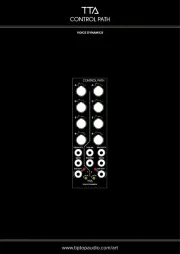
30 Maart 2025

30 Maart 2025

30 Maart 2025

28 Maart 2025

28 Maart 2025
Handleiding Keyboard
- CoolerMaster
- Hohner
- Redragon
- GeoVision
- Matias
- Pelco
- K&M
- Nektar
- Xuma
- IK Multimedia
- Digitech
- Kurzweil
- Artiphon
- ID-Tech
- X-keys
Nieuwste handleidingen voor Keyboard
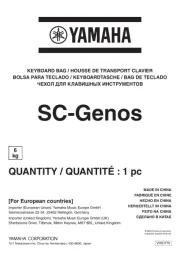
2 September 2025
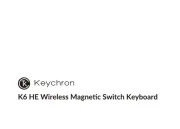
26 Augustus 2025
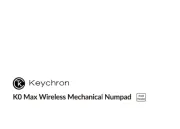
26 Augustus 2025
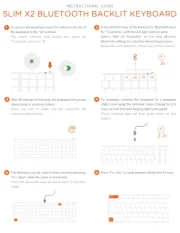
26 Augustus 2025
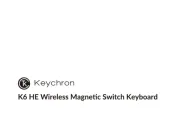
26 Augustus 2025

26 Augustus 2025

19 Augustus 2025
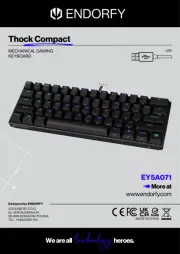
19 Augustus 2025
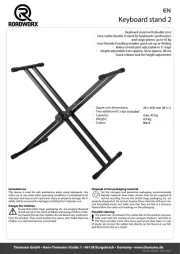
4 Augustus 2025
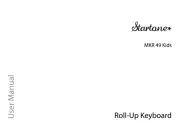
4 Augustus 2025